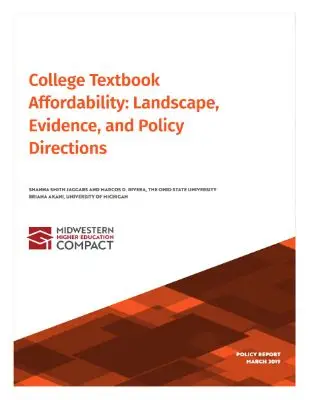College Textbook Affordability: Landscape, Evidence, and Policy Directions
For decades, textbook price increases have outpaced the rise in other educational expenses. Prices have increased by almost 190% since 2006, and undergraduate students now budget over $1,200 for materials each academic year. Lower-income community college students are particularly affected, with textbook costs accounting for 80% of their total college attendance expenditures. Many commercial textbook publishers have shifted their focus to digital textbooks or online supplemental materials, while maintaining high prices and highly-restrictive terms of use.
In a challenge to the commercial publishers’ dominance, a growing community of college faculty have begun to create and share Open Educational Resources (OER). These openly licensed digital materials are available at no cost to any instructor or student, who in turn can use the materials without restriction – for example, instructors can edit or re-mix the materials, and students can print or save them to a personal device. Today, the array of available OER is overwhelming in its volume and variety of quality, which hampers instructors’ ability to sift through, select, and adapt the most appropriate OER for their course. In addition, many instructors cannot switch to OER because they rely on the online ecosystem of their commercial textbook publisher, including automatically-graded homework assignments, quizzes, and exams. Between the two extremes of printed commercial textbooks and OER, there also exist a variety of alternative offerings which attempt to address cost concerns, including the increasingly popular “Inclusive Access” model. Under this approach, students pay for a digital textbook as part of their tuition or course fee; due to the large volume of purchases, the institution and student pay a deeply discounted price for the e-text.
Across the Midwest, colleges and universities are saving students millions of dollars through textbook affordability initiatives, primarily through OER creation and adoption programs and Inclusive Access bulk-purchase discount programs. Notable examples of textbook affordability initiatives include Indiana University’s eTexts Initiative and Ohio’s Open Ed Collaborative. The two initiatives take very different approaches to addressing textbooks costs, and each serves as a potential model for other states and institutions to adapt.

